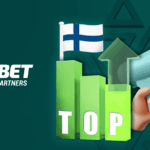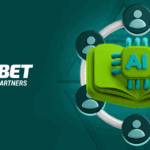How to Use LinkedIn to Connect with Other Affiliates and Partners
18.08.2025
How to Use LinkedIn to Connect with Other Affiliates and Partners
18.08.2025LinkedIn has evolved from a simple resume network into a full-fledged business platform that is actively used in affiliate marketing. If you work in the online partnership niche, develop affiliate programs, or are looking for new partners, LinkedIn can become your main tool for B2B communication. According to LinkedIn, over 65% of users utilize the platform for professional networking, which amounts to over 900 million accounts worldwide.
Affiliate marketing on LinkedIn: how to build recognition and attract partners
Although most affiliates focus on platforms such as Instagram, Facebook, or TikTok, LinkedIn allows you to build long-term relationships with people in the affiliate marketing industry. It is an environment where affiliate marketers can not only advertise affiliate programs but also create a professional image for their business.
To effectively promote yourself on LinkedIn, you need to use several proven strategies.
First, your profile should convey a clear message:
- • specify a specific business model (CPA, RevShare, hybrid);
- • in the description, emphasize the niche or markets you work with (for example, gambling or finance affiliate);
- • add case studies with results or revenue figures (even general ones, for example: “in 2024, I generated over 150,000 clicks of traffic”).
In addition to design, it is important to regularly publish content that resonates with your target audience. This could be:
- • tips for beginners in affiliate marketing;
- • comparisons of different affiliate programs;
- • opinions on changes to affiliate program terms and conditions;
- • conclusions from traffic and source analytics.
If the content contains real figures — for example, “the campaign generated $2,500 in revenue in 30 days” — this inspires confidence and increases the chances of new inquiries.
In parallel with posts, commenting works effectively:
- • comment on posts by leaders in the affiliate industry;
- • support dialogues under news from large affiliate networks;
- • share your own opinion in group discussions.
This allows you to attract the attention of potential partners, even if you don’t publish much of your own content yet.
Many affiliate marketers underestimate LinkedIn, but this is where you can find partners for niche projects or affiliate programs that are not promoted publicly. The average reach for professional content here is 5–8% of the number of subscribers, which is significantly higher than similar indicators on Instagram.
Therefore, if you are looking for an opportunity to take your affiliate marketing to the next level, LinkedIn is a platform that is definitely worth adding to your strategy.
Can you do affiliate marketing on LinkedIn, and why does it work?
Many people ask themselves, “Is it really possible to make money on LinkedIn using affiliate marketing?” And the answer is definitely yes. Although this platform is not like typical social networks, it opens up unique opportunities for those who want to attract an audience not only through advertising, but also through professional influence.
LinkedIn is a place where business representatives, agencies, investors, affiliates, program managers, SEO specialists, and traffic buyers gather. That is why:
- • it is easy to find affiliate program partners who work in the same niche;
- • you can connect with international affiliate marketers and study their cases;
- • you can reach out directly to decision-makers in CPA networks, bypassing intermediaries.
Those who successfully launch affiliate marketing through LinkedIn usually combine several approaches at once:
- • maintaining a professional business profile with a description of their activities;
- • participating in thematic communities related to the online affiliate niche;
- • creating content that analyzes current topics: from commission changes to traffic strategies.
Additionally, it is worth:
- • sharing examples of using affiliate links in real business;
- • talking about your own results, indicating the approximate earn or ROI;
- • mentioning the affiliate programs you work with — this attracts the attention of managers.
The average affiliate who actively promotes themselves on LinkedIn for 3–4 months often receives requests for cooperation even without targeted advertising. This works especially well in the B2B, SaaS, financial affiliate, iGaming, and crypto niches.
In other words, if you are still not using LinkedIn as part of your affiliate marketing strategy, you are losing out on potential income. The platform does not require investment in ads, but allows you to build relationships that bring results in the long term.
How can I effectively use affiliate marketing on LinkedIn nowadays
LinkedIn is not just a platform for resumes or corporate news. For affiliate marketers who want to work in the long term, it becomes a valuable tool — especially in niches where trust, expertise, and direct contact with businesses are important. In 2025, more than 60% of B2B advertising in Europe will be indirectly linked to LinkedIn — direct proof that affiliate marketing works here.
To get the most out of it, you need to:
- • fill out your business profile with a clear positioning of yourself as an affiliate or consultant;
- • indicate your participation in well-known affiliate programs, which will increase trust from partners;
- • regularly publish posts with examples, case studies, tips, and industry observations.
Successful affiliate marketers on LinkedIn act systematically:
- • analyze their niche to speak the language of their audience (e.g., iGaming, crypto, or software);
- • use affiliate links not in the posts themselves, but in comments or through messages — this allows them to bypass platform restrictions;
- • they join circles of trust, creating micro-communities with other affiliates.
To attract online affiliate traffic, it is not necessary to run ads. Most top affiliates get targeted subscribers through useful content and activity in the comments. For example:
- • commenting on affiliate industry news under posts from large affiliate programs;
- • exchanging opinions under analytical publications by colleagues;
- • publications in the “text + slides” format, which generate organic reach.
Don’t forget about social media integration. LinkedIn can be combined with Instagram, YouTube Shorts, or even TikTok, directing your audience from entertaining content to more business-oriented conversations. This way, you can build your own funnel without investing in advertising, which works both for traffic and for building your reputation in the industry.
How to do affiliate marketing on LinkedIn: a step-by-step strategy
Affiliate marketing on LinkedIn is not just about adding links to posts. It is about creating an expert image, establishing connections in a professional network, and competently using the social platform’s tools to build trust and engage an audience. In 2025, LinkedIn will remain the leader among B2B platforms, but affiliates working with B2C verticals will also find a valuable audience here.
The first step is to set up a business profile correctly. The profile should be:
- • as complete as possible – with a relevant headline, photo, and banner;
- • contain references to affiliate marketing, with examples of verticals and traffic you work with;
- • contain a list of achievements: revenue growth, successful launches, or top programs you work with.
After that, you can move on to your content strategy. It should include:
- • case studies with screenshots (blurred if confidential);
- • stories from your own experience, even failures – they increase trust;
- • reviews of affiliate programs with a focus on the benefits for the audience, not you;
- • short videos with tips (via LinkedIn Video or reposts from other platforms).
It is important to avoid excessive direct advertising. LinkedIn has strict rules regarding affiliate links, so it is better to:
- • use bridge pages or landing pages;
- • place links in comments rather than in the main post;
- • add a call-to-action via messenger (“Write to me – I’ll send you the case study”).
At the same time, it is worth pumping up your network of contacts:
- • add other affiliates, SEO, PPC, and digital marketing specialists;
- • join industry groups – even English-speaking ones, if it allows you to find partners;
- • respond to other people’s posts – comments under posts by opinion leaders significantly increase the visibility of your profile.
LinkedIn also allows you to create a mini-funnel to attract partners or customers. For example:
- • profile → valuable post → landing page → request for consultation or access to a course;
- • profile → questionnaire for cooperation with affiliates → email series with case studies.
With regular activity (3–4 posts per week), you can see a steady increase in contacts, trust, and requests for cooperation in just 1–2 months. The main thing is not to use LinkedIn only as a channel for posting links, but as a full-fledged platform for building your personal brand in affiliate marketing.
How to create an affiliate page on LinkedIn for long-term work
To build a strong presence in affiliate marketing, it is worth going beyond just a personal profile. Affiliate marketers who work with large affiliate programs create company pages (LinkedIn Company Page) — this adds professionalism and allows them to elevate their activities to the level of a mini-brand. Successful examples show that a page can become a source of leads, traffic, and trust from other affiliates.
Before creating a page, you should decide on its positioning. This could be:
- • the affiliate’s personal brand promoting specific verticals (e.g., iGaming, finance, or SaaS);
- • a micro-agency specializing in generating traffic for partners;
- • an independent analytical page publishing reviews, case studies, news, and comparisons of affiliate programs.
To get started, you need to fill out:
- • a description of the page indicating the niches, platforms, and types of traffic you work with (e.g., Facebook Ads, SEO, or email marketing);
- • a banner with clear positioning, a call to action, or contact information;
- • links to the site or external affiliate links, if permitted by the platform’s policy.
Regularity of publications on the page is the key to visibility. To attract an online affiliate audience, you need to:
- • make at least 2–3 posts per week with specific examples of work;
- • share analytics from your affiliate campaigns (even with censored figures);
- • talk about the cases of other affiliate marketers with whom you collaborate or are acquainted.
It is also important to integrate the page with your personal profile. Inviting people to subscribe, switching to the “page founder” profile, mentioning the page in posts — all this creates a snowball effect. On average, a page that has been maintained regularly for at least 3 months begins to receive requests from other affiliates, partners, and advertisers. And this is without any investment in promotion. LinkedIn affiliate marketing offers unique opportunities to promote affiliate programs in a professional environment.
Can you post affiliate links on LinkedIn: recommendations
You are allowed to post affiliate links on LinkedIn, but with certain restrictions. The platform doesn’t block such links directly, but algorithms can reduce the reach of posts that look like outright advertising. Recommended:
- • Disguise links through your own website or landing page.
- • Always indicate that it is an affiliate link to maintain audience trust.
- • Publish such links in a relevant, informative context (for example, in articles or case studies).
If you use the platform carefully and take into account its business format, affiliate marketing can be effective on LinkedIn.
Recent posts

Top Affiliate Programs and Networks in Finland – 2025 Guide
Finland's online economy has turned into a rich area for results-based marketing. From tech and trips to web services and betting, best affiliate programs for…

How AI Is Shaping iGaming Affiliate Marketing
The iGaming industry is changing every year, and so are the approaches to affiliate marketing. One of the most powerful drivers of these changes is…

Effective Geo-Targeting Strategies for Betting Campaigns in 2025
The betting landscape in 2025 rewards precision over volume; success comes from reaching the right person in the right place. Geo-targeting now defines how brands…

